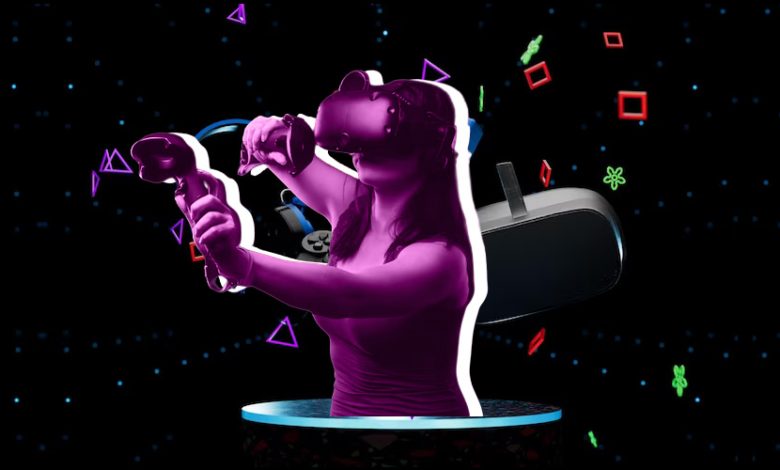The Ultimate Web3 Game Development Guide: Navigating the Future of Gaming

In the rapidly evolving landscape of technology, Web3 has emerged as a game-changer, quite literally. It’s transforming the way we perceive and engage with online gaming, offering exciting opportunities for both developers and players alike. In this comprehensive guide, we’ll delve into the world of Web3 game development, exploring its key concepts, potential, and how you can embark on your journey to create the next generation of interactive and decentralized gaming experiences.
Understanding Web3: A Brief Overview
Before we dive into the intricacies of Web3 game development, let’s start by understanding what Web3 actually is and why it’s causing such a buzz in the tech and gaming communities.
What is Web3?
Web3 is the next iteration of the internet, characterized by a decentralized, peer-to-peer, and trustless system. Unlike the current Web2, which relies on central authorities (like social media platforms and cloud providers) to facilitate interactions and transactions, Web3 leverages blockchain technology to enable users to interact directly with one another and digital assets without intermediaries.
Key Features of Web3
- Blockchain Technology: At the heart of Web3 is blockchain, a distributed ledger technology that ensures transparency, security, and immutability of data. It allows for the creation and management of digital assets like cryptocurrencies and non-fungible tokens (NFTs).
- Smart Contracts: Smart contracts are self-executing contracts with the terms of the agreement between buyer and seller being directly written into lines of code. They automate processes and ensure trust in transactions.
- Decentralization: Web3 operates on a decentralized network, which means no single entity has control over the entire system. This fosters trust and reduces the risk of censorship or data manipulation.
- Interoperability: Web3 protocols and platforms are designed to work seamlessly with each other, allowing for the interoperability of assets and data across various applications and ecosystems.
Now that we have a foundational understanding of Web3, let’s explore how it’s revolutionizing the gaming industry.
Web3 and Gaming: A Perfect Match
Web3 and gaming share a symbiotic relationship, as both aim to create immersive, interactive, and user-centric experiences. Here’s how Web3 is reshaping the gaming landscape:
1. True Ownership of In-Game Assets
One of the most significant advantages of Web3 in gaming is the concept of true ownership. In traditional gaming, players spend countless hours and money acquiring in-game assets like skins, weapons, and characters. However, they don’t truly own these assets; they’re essentially renting or borrowing them from the game developers.
With Web3, in-game assets can be represented as NFTs. These non-fungible tokens are unique, verifiable, and stored on a blockchain. When players acquire NFTs in a Web3 game, they have true ownership of these digital assets. This means they can trade, sell, or use them in other compatible games, providing players with more control and freedom over their gaming experience.
2. Play-to-Earn Mechanisms
Web3 game developers are introducing innovative play-to-earn (P2E) mechanics that enable players to earn real-world value through their in-game actions. This model empowers players to turn their passion for gaming into a sustainable income stream.
In a P2E Web3 game, players can earn cryptocurrency or valuable NFTs by completing tasks, achieving milestones, or participating in the game’s economy. This financial incentive not only attracts more players but also fosters a vibrant and engaged gaming community.
3. Interoperability and Cross-Platform Play
Web3 promotes interoperability between games and platforms. Players can seamlessly transfer assets and progress from one Web3 game to another, breaking down the barriers that exist in traditional gaming. This interoperability encourages players to explore a broader gaming ecosystem and promotes player retention.
Cross-platform play, facilitated by blockchain and Web3 standards, allows gamers on different devices and platforms to compete and collaborate in the same game universe. This opens up new possibilities for multiplayer experiences and enhances the social aspect of gaming.
4. Community-Driven Development
Web3 empowers developers to engage directly with their gaming communities. Through decentralized governance and decision-making processes, players have a say in the development and direction of the games they love. This democratic approach fosters a sense of ownership and loyalty among players, driving the success of Web3 games.
Now that we’ve seen how Web3 is transforming gaming, let’s delve into the steps to develop your own Web3 game.
Developing a Web3 Game: A Step-by-Step Guide
Creating a Web3 game is an exciting endeavor that requires a unique set of skills and a deep understanding of blockchain technology. Here’s a step-by-step guide to help you get started:
Step 1: Conceptualize Your Game
Before you dive into development, you need a compelling game concept. Think about what makes your game unique and how it leverages Web3 features to enhance the player experience. Consider elements like true ownership, P2E mechanics, and community involvement in your game’s design.
Step 2: Learn About Blockchain and Smart Contracts
To develop a Web3 game, you must understand the fundamentals of blockchain technology and smart contracts. Start by exploring popular blockchain platforms like Ethereum, Binance Smart Chain, or Solana, and learn how to create and interact with smart contracts.
Step 3: Choose the Right Blockchain
Selecting the blockchain platform for your game is a crucial decision. Factors to consider include transaction fees, scalability, and the existing Web3 gaming community. Ethereum is a popular choice, but other blockchains may be more cost-effective or better suited to your game’s requirements.
Step 4: Develop Your Smart Contracts
Design and code the smart contracts that will power your game. These contracts will manage assets, game rules, and interactions within the game. Ensure they are secure and thoroughly tested to prevent vulnerabilities.
Step 5: Create and Mint NFTs
If your game involves in-game assets represented as NFTs, you’ll need to create and mint these tokens. Use standards like ERC-721 or ERC-1155 for Ethereum-based games. Each NFT should have unique properties and attributes to make them desirable to players.
Step 6: Build the Game Backend
Develop the backend infrastructure of your game, including servers, databases, and APIs. Ensure that it integrates seamlessly with the blockchain and smart contracts to facilitate in-game actions and asset management.
Step 7: Design the User Interface (UI) and User Experience (UX)
The UI and UX are critical for player engagement. Design an intuitive and visually appealing interface that allows players to interact with the game and their assets easily. Incorporate Web3 elements, such as wallet integrations for asset management.
Step 8: Implement P2E Mechanics
If your game includes play-to-earn mechanics, design and implement systems that reward players with cryptocurrency or NFTs for their in-game achievements. Balancing these mechanics is essential to maintain a fair and enjoyable experience.
Step 9: Test Thoroughly
Testing is a crucial phase in game development. Ensure that your game functions correctly, that smart contracts are secure, and that gameplay is smooth. Consider running a closed beta test with a select group of players to gather feedback.
Step 10: Launch and Market Your Game
Once your Web3 game is ready, launch it on the chosen blockchain. Develop a marketing strategy to attract players and build a strong community around your game. Engage with players and listen to their feedback for ongoing improvements.
Step 11: Maintain and Evolve
Web3 games are not static; they evolve based on player feedback and changing trends. Continue to update and improve your game, and be open to implementing community-driven changes through governance mechanisms.
Challenges and Considerations
While developing a Web3 game can be rewarding, it’s not without its challenges and considerations:
Scalability
Blockchain networks can face scalability issues, resulting in slow transactions and high fees during periods of high demand. Choose a blockchain that can handle your game’s expected traffic and explore layer-2 scaling solutions.
Security
Blockchain smart contracts are immutable, so any vulnerabilities can lead to irreversible consequences. Invest in security audits and testing to minimize the risk of hacks or exploits.
Regulatory Compliance
Keep abreast of legal and regulatory developments related to blockchain and cryptocurrency. Compliance with relevant laws is essential to avoid legal issues down the road.
Community Engagement
Building and maintaining an active and engaged community is crucial for the success of your Web3 game. Be prepared to invest time and effort in community management and communication.
User Onboarding
Web3 gaming can be intimidating for players new to blockchain technology. Create user-friendly onboarding processes and provide educational resources to help players get started.
Conclusion: Unlocking the Web3 Gaming Potential
Web3 game development represents the future of gaming, offering unique opportunities for developers and players to participate in a decentralized and player-centric ecosystem. By understanding the core concepts of Web3, selecting the right blockchain, and following a structured development process, you can create innovative and engaging games that redefine the gaming industry.
As you embark on your Web3 game development journey, remember that success in this space requires not only technical expertise but also a commitment to fostering a vibrant and inclusive gaming community. By combining blockchain technology with creativity and player-centric design, you can unlock the full potential of Web3 gaming and shape the future of interactive entertainment.
Stay tuned for the next wave of Web3 games, where players truly own their gaming experiences, and the boundaries of virtual worlds are limitless. The future of gaming is decentralized, and it’s yours to create.



